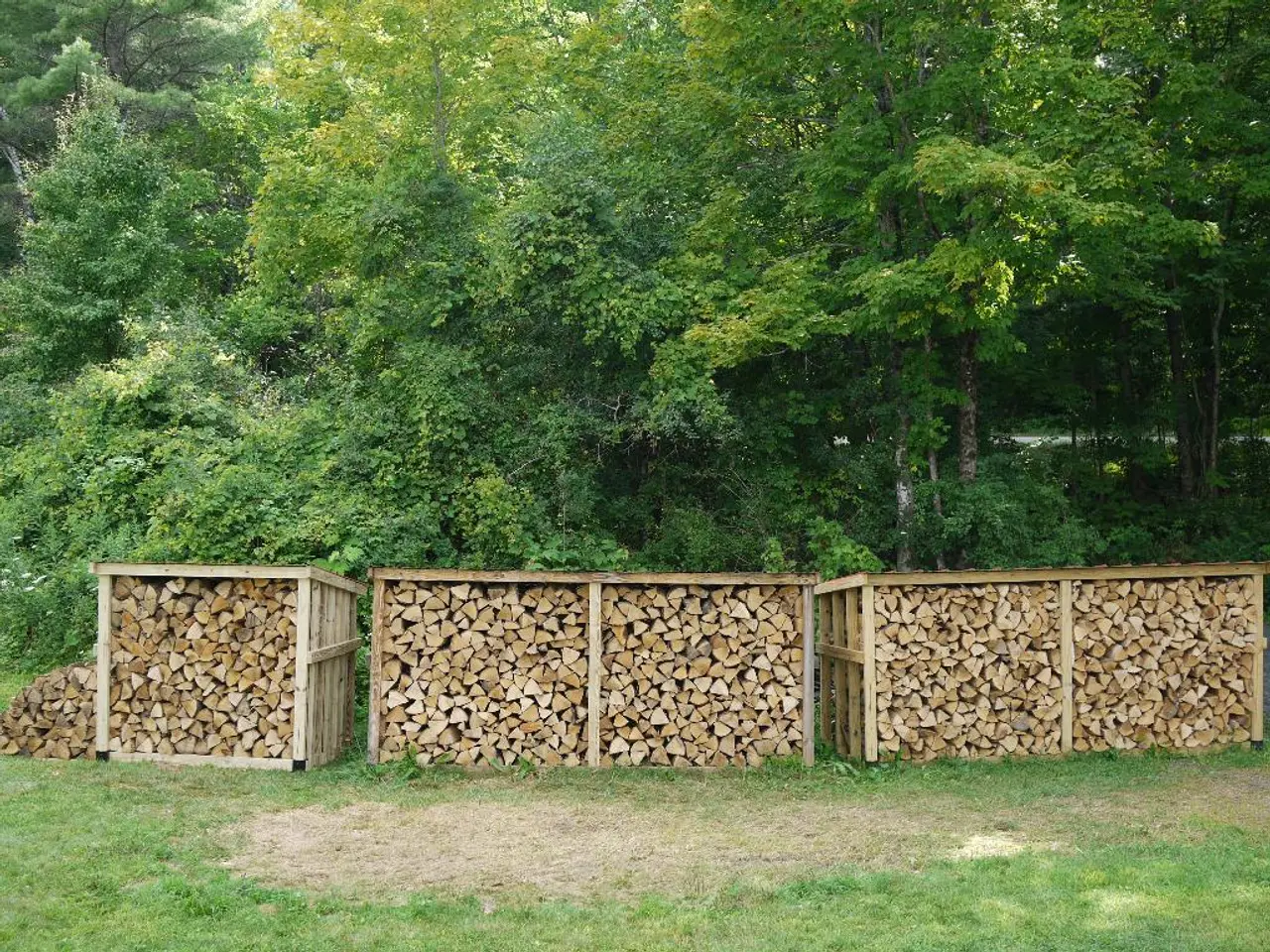United States Plans to Increase Tariffs on Canadian Wood Exports
In a move that has sparked controversy and raised concerns about market stability, the United States has imposed substantial tariffs on Canadian softwood lumber imports. The current combined duties, effective as of late July and early August 2025, are approximately as follows: Canfor Corporation faces a rate of 47.65%, West Fraser Mills Ltd. sees a rate of 26.47%, and all other Canadian lumber producers are subject to a rate of 35.19% [1][2][3].
These tariffs, which combine anti-dumping and countervailing duties, have been met with strong criticism from the Canadian lumber industry, particularly in British Columbia, which warns of potential harm to workers and communities dependent on forestry [4]. The U.S. homebuilding sector also faces increased lumber costs, contributing to higher housing prices and affordability challenges [2].
The dispute over softwood lumber has been ongoing since the 1980s, with the U.S. claiming Canadian government ownership of forests as unfair subsidization, a claim Canada rejects [6]. In response to escalating tariffs and the absence of a current bilateral agreement (expired since 2015), Canadian officials have indicated openness to negotiating quotas as a possible compromise to bring stability to cross-border lumber trade [5].
The tariffs are expected to increase costs for imported Canadian lumber, which historically accounted for a large share of lumber supply in the U.S. [2]. This could lead to increased building material prices, delayed construction timelines, reduced new home starts, and ultimately increase final home prices, impacting affordability. Continued tariff escalation or additional measures (e.g., potential national security tariffs under Section 232) could exacerbate these effects [2].
A resolution such as reintroducing quotas or a new trade agreement could stabilize prices but would likely maintain some level of trade restriction and cost premium [5]. Meanwhile, Canada is pursuing market diversification, shifting its focus towards Europe and Asia [7]. The share of Canadian softwood lumber headed to the U.S. has dropped from 78% to 68% in the past year [8].
The U.S. Lumber Coalition claims that the Canadian softwood lumber industry is a bad actor in unfair global trade [6]. However, Canada's strategy now includes a $1.2 billion support package for the industry, which includes $700 million in loan guarantees and $500 million for product innovation and market expansion [9].
In response to the tariffs, the British Columbia Minister of Forests, Ravi Parmar, called the duties "absurd and reckless" [10]. The anti-dumping increase is already in effect, and the U.S. Customs and Border Protection has been instructed to collect the new rates immediately [11]. Projections suggest that the tariffs could add up to $14,000 to the price of a new home by 2027, a cost that will eventually be passed on to American buyers [12].
The ongoing Section 232 investigation ordered by President Trump could add more tariffs if lumber imports are deemed a national security concern [1]. With the market in a state of uncertainty, negotiations between the U.S. and Canada continue in an effort to find a resolution.
References: [1] CBC News [2] The Globe and Mail [3] Bloomberg [4] BC Lumber Trade Council [5] Reuters [6] U.S. Lumber Coalition [7] CBC News [8] Bloomberg [9] Government of Canada [10] BC Lumber Trade Council [11] CBC News [12] The Globe and Mail
Sports organizations in Canada may face challenges due to increased lumber costs, as the tariffs on Canadian softwood lumber imports could lead to higher building material prices. This could impact the construction of sports facilities, potentially delaying or increasing their costs. Continued escalation or additional tariffs could further exacerbate these effects, potentially making it more difficult for sports organizations to secure funding for new facilities. The ongoing dispute over softwood lumber has been a significant concern for Canadian officials, as a resolution could impact various sectors, including sports.







